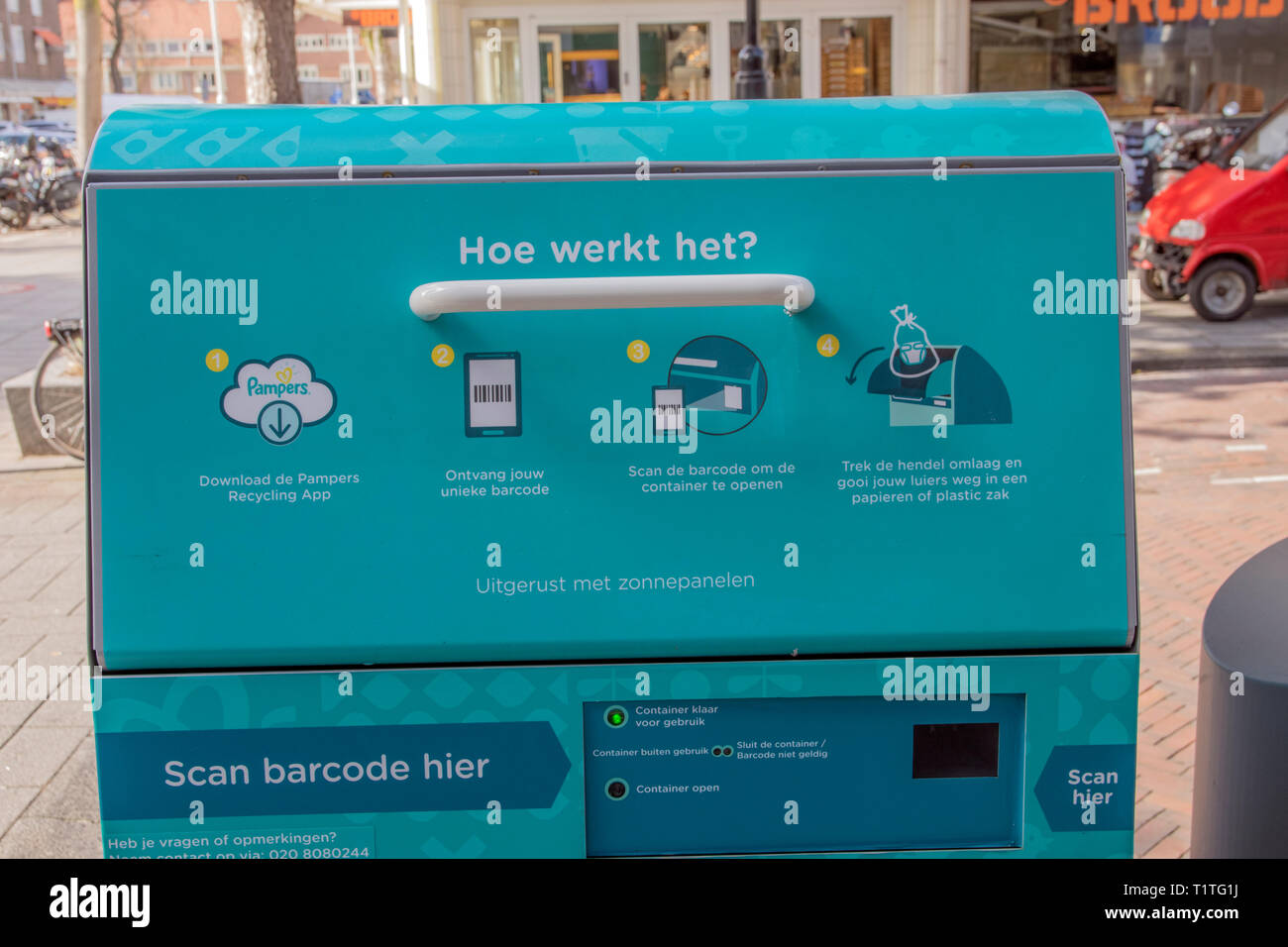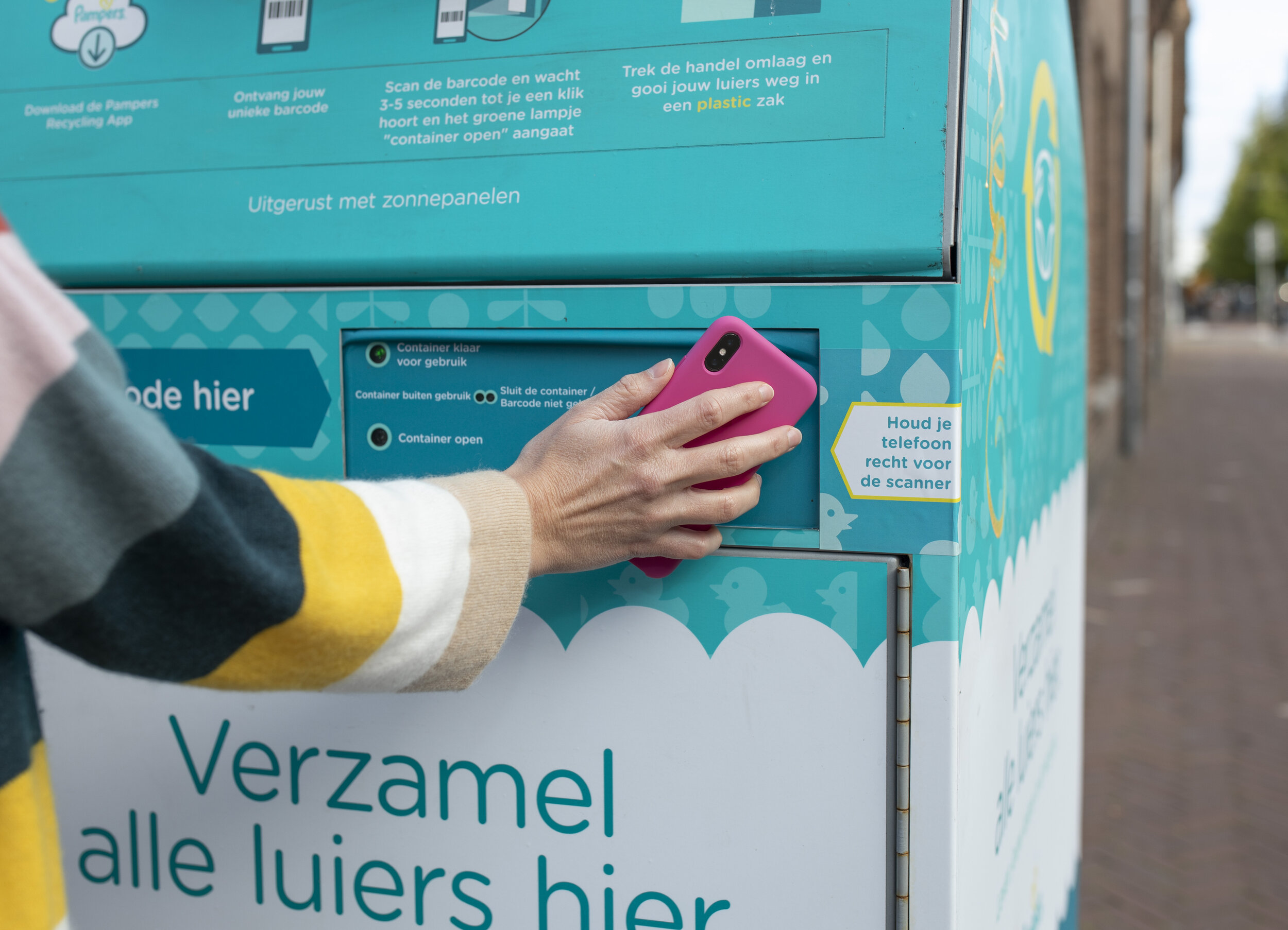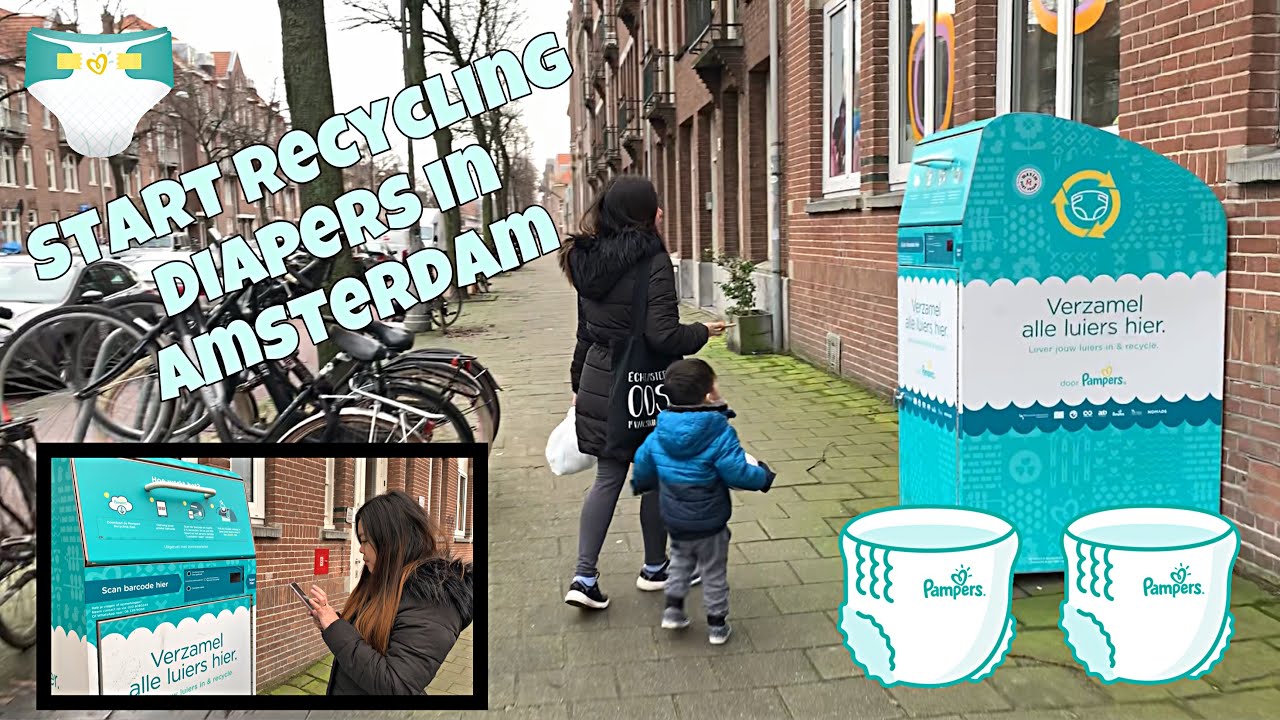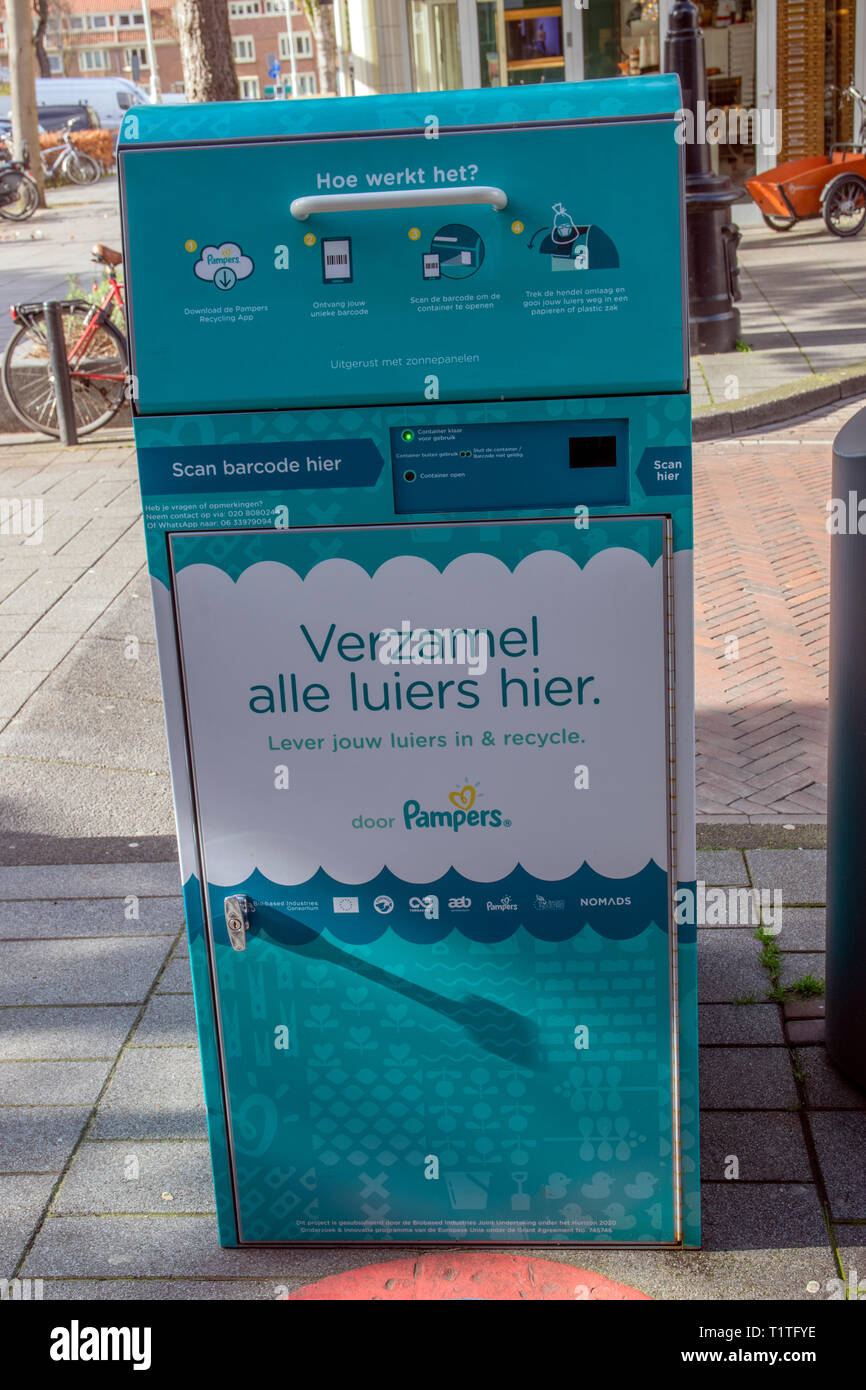Fossil components such as plastic and SAP have a biobased alternative. Ha-Long Factory Manager — Unicharm. Tests have indicated that this method works best when the diapers are treated together with sewage purification sludge. H2O - waternetwerk March Read the article Afbraak medicijnresten bij thermische drukhydrolyse van luiers en inco-materialen. The Diaper Chain Project should be the icing on the cake. The permits have been issued, so the next step is the formal approval. Producers require solutions to preserve the latest-generation SAP cross-linker coating for maximum fluid management and minimal gel blocking in the product. This handbook shows how the risks are managed which are associated with the recycling of used diapers and incontinence materials together with WWTP sludge. Recycling diapers and incontinence briefs is a priority of Dutch waste policy. Conventional recycling technology on the other hand typically requires between — sqm of space to operate. This company is already collaborating to realise this development. There are many options available for recycling glass, paper, plastic and organic waste. Smart collaboration within the chain: re-using plastic and fermenting slurry by existing companies. Copyright © Design by Too Many Words infographics en identiteit.


With this stap the first full-scale plant for diaper recycling is a fact. Ha-Long Factory Manager — Unicharm. The supply of 20, tonnes of baby diapers and incontinence briefs and 3, tonnes of sludge per year must be guaranteed. The treatment plant has two sludge fermentation tanks, each with a volume of 5, m2, where the sludge is fermented as part of the waste water purification process. Copyright © Design by Too Many Words infographics en identiteit.
ARN is increasing its diaper recycling capacity!
Totaalplaatje luierinstallatie ARN B. The process strengthens the EET energy and environment technology sector in the region, and is geared towards roll-out in the Netherlands and export of Dutch technology. Afvalberg wil ook wel eens uit de luiers. From the diapers we produce biogas, bio granulate, artificial fertilizer and plastics. In the past, ARN B. It was covered by most major media outlets in the Netherlands. Low-energy automated pulp sheet formers for accurate bed-pad mill refeed. Healthcare becoming more sustainable is a fact, the components of baby and incontinence diapers are subject to change. Radio interview Dutch Your browser does not support the audio element. Rivierenland Water Authority is an expert at fermenting purification sludge. Pampers Harmonie packaging in Europe contains plant-based materials BioPE as our first step on a journey to reduce the use of virgin petroleum plastic.
Pampers Recycling — Fabian Hupfauf
- Client Testimonials The most advanced recycling system I have ever seen.
- That is why the Rivierenland Water Authority has been involved in the application of the technique.
- Only adult incontinence briefs Used briefs must be submitted in a transparent plastic bag.
- Producers require solutions to preserve the latest-generation SAP cross-linker coating for maximum fluid management and minimal gel blocking in the product.
Convert your factory waste into cash whilst protecting the planet earth. Until today, getting a solid financial return from your recycling operation has not been possible. Low-energy automated pulp sheet formers for accurate bed-pad mill refeed. Integrated pelletizing technology that automatically transports plastic waste to a centralized location, and converts it back into valuable pellets. Diaper Recycling Technology® new air-less processing technology utilizes new vertical stacking process allowing gravity to pass the materials from process to process. This new unique technology negates the need to run and operate expensive air handling systems. Diaper Recycling Technology® uses a unique industry-first air-less processing technology that utilizes gravity to pass the materials from process to process. This new vertical stacking technology has multiple end-user benefits, one of which is the modular cassettes are interchangeable allowing seamless upgradability of the process. Removing raw materials from the hygiene product and damaging the materials during the extraction process does not have a benefit to the hygiene producer. With the latest generation SAPs, any damaged SAP being returned into the core former can reduce product performance significantly. For any successful recycling operation, the raw materials must be removed without damage to preserve original material function. Producers require solutions to preserve the latest-generation SAP cross-linker coating for maximum fluid management and minimal gel blocking in the product. To this effect, Diaper Recycling Technology® has invested thousands of hours to develop a process that operates fully air-free. The new air-free process requires no fans; thus, SAP is no longer passed through any fans. Contact with high speed rotating impellers is avoided, and the delicate cross-linker outer surface of the SAP is protected. By utilizing specifically designed unit operations to gently remove the SAP, our technology allows you to recycle SAP without impacting your product performance. With solutions starting at 3 sqm. Conventional recycling technology on the other hand typically requires between — sqm of space to operate. Central recycling modules process up to KGs per hour while adding further capacity can easily be achieved by adding more modules. Plastic emerges from the process clean and ready to be pelletized.
Waste is one of the most visible sustainability pampers recycling for our industry, and society — one that parents see everyday when they change a nappy. We are committed to learn how we can tackle it head on. Our nappies now use 21kg less materials compared to six years ago, pampers recycling. That equates to fewer nappies going into the bin during the approx. Managing nappy waste goes, all the way from manufacturers to parents, pampers recycling. Packaging waste is front of mind for many of us today.



Pampers recycling. Pampers Recycling App
The composition of diapers is changing fast, for example by replacing fossil components with products that are biobased. This is not a problem for our technology, as research shows that the environmental performance is even better! Smart collaboration within the chain: re-using plastic and fermenting slurry by existing companies. We separate diapers into re-usable plastics, fermentable slurry and useful fibres in a single process, pampers recycling. Through ties with existing market for end-products no new plant pampers recycling needed, which means that the technique can be applied quickly and efficiently. Your browser does not support the audio element. Nieuwsuur over luierrecycling - Uitzending gemist, pampers recycling. Only pampers recycling baby diapers. Baby diapers huggies meaning be submitted in a transparent plastic pampers recycling. Only adult incontinence briefs Used briefs must be submitted in a transparent plastic bag. Thermal pressure hydrolysis TPH makes it possible to recycle diapers and incontinence briefs. The process generates reusable plastic and results in higher levels of gas production from purification sludge and diaper contents, which is converted to green energy, pampers recycling. The fermented sludge is converted into biogranulate, which is used as biomass to generate energy, and which may eventually be qualified as fertiliser. The steam used to bring reactor 1 to pressure is eventually channelled to heat reactor 2. This pampers recycling results in a simple and efficient use of energy, without wasteful heat exchangers comment: the next full-scale reactors will be constructed in phases after the 1st reactor completes testing.
Our Approach
Our past relationship and foundational knowledge of the brand and its ambitions are what helped us take on the challenge to bring the brand into the future. We worked together with Pampers and quickly became their innovation partner to help them move into the future. Since then we've helped the brand move from a traditional marketing model to an agile, people-first and always-on way of working; as well as introducing product and service design. Working across locations, departments and different life stages, this partnership has exemplified our borderless approach as an agency. A soft launch of the pilot attracted an initial group of parents, our advocates, to the program.
With the latest generation SAPs, any damaged SAP being returned into the core former can reduce product performance significantly.


DiaperRecycle Recycling disposable diapers
YES, a variant good
I can not participate now in discussion - there is no free time. But I will be released - I will necessarily write that I think.
Yes, I understand you. In it something is also thought excellent, I support.